It’s been three months since the last time I wrote a blog post. As most of you know my husband and I were away in Cyprus the past three months working in a restaurant. It was a lovely experience working in a professional kitchen.
I won’t be sharing food photos as it was impossible to have a camera with me while working, apart from a couple of times when I took a few shots on my mobile.
Today’s post is mostly a photographic travelogue to Cyprus to show you a few of the places we visited. On most of our days off, my husband’s day off would not coincide with mine, so we could not go anywhere. I spent most of my days off doing house chores. We decided to stop working a week before leaving in order to spend some time with our son and visit some places, mostly near Limassol. On one of my days off, my husband was working on that day, so my son drove me to Governor’s Beach, which is 26 km from Limassol, near the boundaries of Limassol and Larnaca.
It was very cold on that day and there was not a soul in the nearby restaurants situated on the the beach but we enjoyed the lovely view, walked on the beach and after drinking a cup of coffee we headed back to the town.
On another day we visited Pissouri. Pissouri is a lovely village, 30 km from Limassol, towards Paphos. The village is situated on the side of a lovely mountain hill, near the seaside.
On another day trip, we went to Paphos, 50 km west of Limassol. Before arriving to Paphos we passed from Kolossi. My maternal grandmother was from Kolossi and her property was just behind the 15th century castle which stands today and which was built on the site of an earlier castle. In the 13th century it belonged to the knights of St. John of Jerusalem – Knights Hospitaller. Control later passed to the Knights Templar. The surrounding lands were highly cultivated with sugar cane and vineyards, from which the the famous ancient Cypriot wine was produced. The name Commandaria was given to this wine much later, during the end of the 12th century A.D., when Richard the Lionheart sold the island to the Knight Templars, who then sold it to Guy de Lusignan. However, they kept a large feudal estate close to Limassol, where they would cultivate local vines. This estate was referred to as “La Grande Commanderie”. This wine has the distinction of being the world’s oldest named wine still in production.
On our way to Paphos we visited the ancient site at Kourion, also know as Curias or Curium. Ancient Greek historians Herodotus and Stravon mention that it was founded by Argive settlers, being one of the richest and most powerful Kingdoms of Cyprus. It is also cited by Esarhadon, King of Assyria (673-672 b.C) whose reports on Prism refers to it as being among other kingdoms of Cyprus, such as Idalion, Kition, Salamina, Hytra, Tamassos, Ledra and Soloi.
The second century ancient Greco-Roman amphitheatre at Kourion (Curium), which has been completely restored is impressive and hosts open air musical and theatrical performances.
Apart from the ancient Agora you can visit, other important monuments, such as their many houses. One of the most impressive house is that of Efstolios. You can walk through its many rooms, which are around two courtyards as well as the baths of the house. In antiquity it served as a royal house.
Mosaic in the house of Efstolios: a young woman wearing an armlet and holding a measure of the Roman foot. The Greek Inscription “KTICIC” symbolizes the Founding Spirit of the Creation.
What impressed me the most were the well preserved mosaics, which cover the floors of the buildings. On the inscriptions the name of its owner “Efstolios” is incribed, as well as the fact that he was a Christian. It is also interesting that on an inscription God Apollo Hylates, who was worshiped in the archaic times, is also mentioned. You can visit the sanctuary and temple of Apollo Hylates which is 2.5 km, on the west side of the ancient site of Kourion towards your way to Paphos.
The sea view from the house of Efstolios is magnificent. You can see as far as the coast of Akrotiri.
View of Akrotiri peninsula.
Petra tou Romiou in the background and the Saracen Rock in the foreground.
These two rocks are associated with two myths. According to Greek Mythology, goddess Aphrodite, whose name means born out of the sea foam, was born here. “Aphros” in Greek means sea foam. According to mythology, Aphrodite was born out of the foam that formed in the sea where Uranus’ severed genitals landed, when his son Cronus tossed it out from the sky.
The second myth associates the place with the exploits of the hero Basilios, who was half Greek (Romios) and half Syrian, as described in the epic narrative text called “Digenes Akritas” (which means “Two Blood border Lord”. According to the legend, Basilios hurled the huge rock from the Troodos Mountains to keep the invading Saracens off the island.
After visiting Kolossi and Kourion we arrived at Paphos well after noon.
Paphos is situated on the west coasts of the island. We walked on the seafront upto the Old Medieval Castle. After taking some photos and having late lunch and coffee, we did not have much time to visit other places in Paphos.
On another day trip to Choirokoitia, we made a small detour to visit the Monastery of Agios Georgios Alamanos.
The monastery is only 20 km from Limassol. We used to visit the monastery quite often when I was a child, as the mother superior was related to us but as my husband had never been there before, he wanted to visit it.
We arrived around noon. There were a couple of nuns there but by the time we visited the church and back we heard the “semantron” which summoned the nuns for lunch.
I was planning to buy some homemade rosewater I saw on display at the entrance but there was not a soul there when we left so we left empy-handed as we were in a hurry to visit Choirokoitia.
Not very far from the monastery and on your way towards Nicosia or Larnaca you will find the Neolithic settlement of Choirokoitia on your left. It stretches over the steep slopes of a hill and is enclosed within a wall which has been uncovered in the East and North. I must warn you that getting to the top is not as easy as it looks. My legs were stiff for a week 🙂
The site is known as one of the most important and best preserved prehistoric sites of the eastern Mediterranean. Much of its importance lies in the evidence of an organised functional society in the form of a collective settlement, with surrounding fortifications for communal protection. Choirokoitia Culture (7000 – 5800 B.C.), or the Recent Aceramic Neolithic of Cyprus, results from a long process which began in the 9th millenium, if not before. Excavations on the site, which is included in the World Heritage List of UNESCO, began in 1936 under the direction of Porphyrios Dikaios, then Curator of the Department of Antiquities, and since 1976 have been continued by a French Archaeological Mission, under the direction of A. Le Brun. The constructions are circular with flat roofs in the form of a terrace. A house constitutes the grouping of several of these circular constructions around a small inner “courtyard” with an installation for grinding grain. Flint or bone tools and receptables made of stone or basketwork were used in daily life. The deceased were buried in pits cut into the floors of the habitation units. Some of them were accompanied by stone vessels and necklaces. The nutrition needs of the inhabitants of Khoirokoitia were met by animal husbandry, hunting, cultivation of plants and gathering of wild fruits. The site was abandoned around 5800 B.C. It was reoccupied from 5000 B.C. by people of the Sotira Culture who knew and had mastered the art of pottery.
In the course of its efforts for the best protection of the site and in order to facilitate its interpretation for the visitors, the Department of Antiquities proceeded to reconstruct five circular units and part of the enclosure wall, including one of its entrances.
These are identical copies of the original structures. The raw materials for their construction were collected from the immediate environment of the settlement and the project was carried out by taking into account all the relative information yielded from the excavation of the actual site. One of the circular structures was left semi-finished in order to show the various stages of its construction and the materials employed for this purpose: stones, mudbricks, wood and reeds. The roofs were made flat since, according to the excavarors, the old theory for domed roofs has become obsolute in light of new finds.
Several objects, both authentic and copies, were placed inside the circular structures in order to recreate some aspects of the daily life in Neolithic Cyprus.
Cyprus has always had problems with drought so there are a lot of Dams anywhere near rivers. Yermasoyia Dam is the closest to Limassol.
It is only 10 – 15 minutes drive from the town and is worth visiting to enjoy the view and for those who like sports can go for walks in nearby trails, fishing, canoeing etc
The last time I visited the dam it was more than thirty years ago. Yermasoyia village was separated from Limassol and to my surprise the whole area from Yermasoyia bridge to the Dam is now inhabited.
Omodos is a village nestled in the southern foothills of Troödos Mountains, in the Limassol wine making region, about 42 kilometers from the city of Limassol (about 30 minutes drive). The area is known as the “Krassochoria”, which means “wine villages” and is found north of Limassol on the southern slopes of the Troodos Mountains. Wine has been produced in this area for centuries and still forms an integral part of village life. The medieval winepress of the village is one of its attractions as well as numerous wineries and wine museums.
You can visit the 4th Century stone built monastery of The Holy Cross, which dates back before the arrival of Saint Helena to Cyprus who according to historians, when she visited the island, on her way back from The Holy Land, she offered a piece of the Holy Rope with which Christ’s hands were tied to the Cross and a piece from the Holy Cross, where he was crucified.
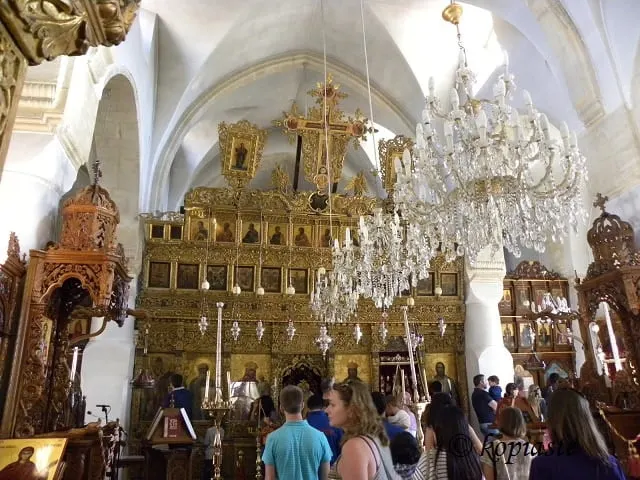 This as well as fragments of saintly bones and the skull of Saint Philip, as well as other relics, attract many pilgrims to the village.
This as well as fragments of saintly bones and the skull of Saint Philip, as well as other relics, attract many pilgrims to the village. 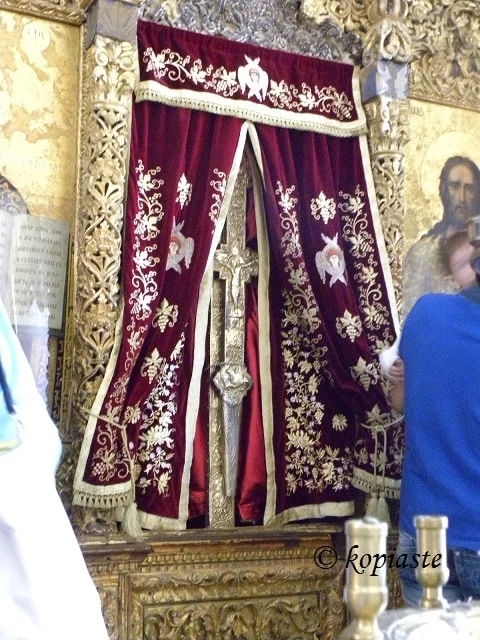
In the village you can visit some folklore museums, lace workshops, etc. There are many restaurants, cafeterias, shops selling local products, most of which you can sample for free at many outlets, or buy some of the unique “arkatena” which is a local bread make from chickpea yeast and “shoushoukos”, the traditional one made with wine must, filled with nuts. However, now you can find shoushoukos made with carob, pomegranate, pistachio etc. It is also famous for its handmade embroideries and laces.
Local goodies such as arkatena, honey etc.
Carob and Pomegranate Shoushoukos filled with almonds and walnuts respectively.
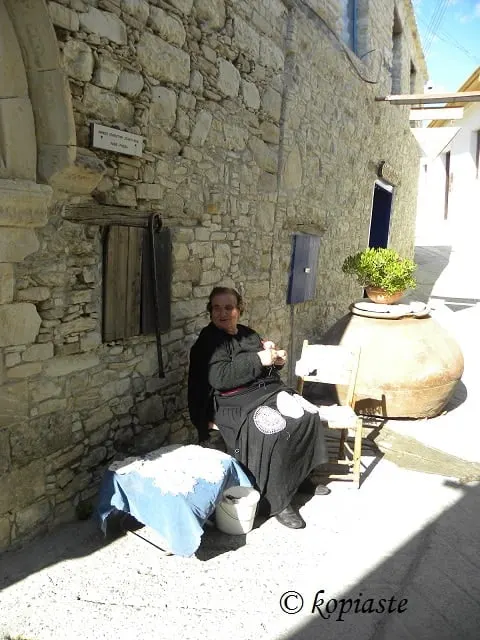
A local woman sitting in the street, making lace.
Lace made using crochet hook on the right or just a sewing needle on the left.
Embroideries and Laces
A local “taverna” / Restaurant
On our way back to Limassol we made a small detour and visited my father’s village “Lophou”. “Lophou” takes its name from the word “lophos”, which means hill.
The village of Lofou is about 26 kilometers northwest of the city of Limassol. The village is built in a circular pattern on hills, at an altitude of 780 meters. It is surrounded by mountains with narrow and steep versants. The landscape is divided by two rivers that are canals of ‘Kryos’ and ‘Kouris’, which both come from the river ‘Kouris’.
Lofou is a village dating back from the Byzantine period although archaelogical findings trace it back to the bronze age. It is one of the “krassohoria” of Limassol and it used to be one of the richest villages in Cyprus and had a lot of underground water.
After the First World War and then after the Second World War there was a tremendous decline of the population in the village. Most of its inhabitants already owned land in Ypsonas, which they used during the summer months, to cultivate carobs, cereal fields etc. Several of these farmers gradually settled in Ypsonas. During the period of the British rule there is a steady population decline of Lophou in favour of Ypsonas and after the Independence in 1960, due to urbanization many moved to Limassol, to find a job. Eventually the village was almost totally abandonned. In 2001 only 50 inhabitants remained in comparison to 962 in 1921. In 1987, the Association of Expats of Lophou is formed aiming to help the village in many ways especially to bring the village back to life. The church of Panaghia Chrysolophitissa is dedicated to the Annunciation of the Virgin “Evagelismos tis Panaghias”. The church was built in 1872 by all the villagers who volunteered to help build it. Only a few technicians from other villages were paid.
Some of the locals who owned property in Lophou turned their stone built houses into summer houses and now you can find a lot of tavernas, cafeterias, a hotel has been built and the village hosts over 2000 inhabitants during the summer.
There is a folklore museum and an old olive mill you can visit.
Renovated, traditional house in Lophou
The houses were usually two storey buildings. There are still some old stone houses which are yet to be restored and we went inside one of them to see how they were. These traditional houses were protected by a tall, surrounding wall and entering inside there was a courtyard where they kept their domestic aninals, such as their horses or donkeys, some hens, ducks, turkeys etc. Their storage rooms were on the ground floor and the toilet was far away, in some corner of their courtyard.
The kitchen with the fireplace, which was mostly used as their living room, as well as the bedrooms were on the “anoi” that is to say on the top storey.
The roofs were made of wooden beams (huge tree trunks) called volitzia, supporting the roof.
You can learn more about Lophou village watching this interesting video prepared by Lophou Association.
On our way back, we stopped to take a picture of the sunset as well as the Dam of Kouris.
As I said before, Cyprus is full of Dams. The village of Alassa, which was used as an intermediate stop by the inhabitants of Lophou on their way to Ypsonas, who owned property there as well, was moved to a higher location and the village was flooded by the river Kouris in order to create this huge Dam of Alassa or Kouris in 1985. 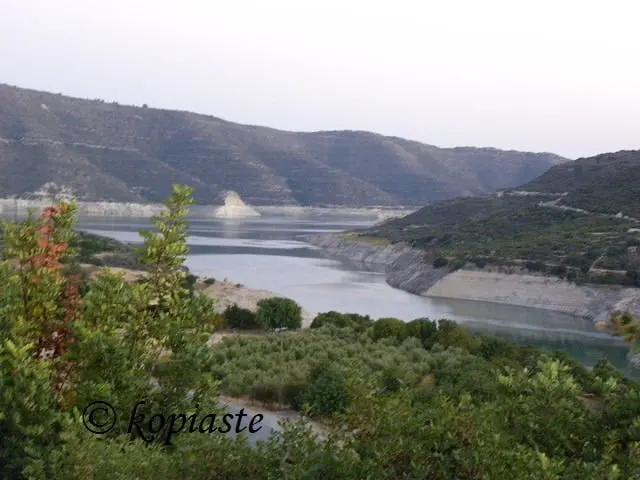
Μy Cypriot cookbook “Mint, Cinnamon & Blossom Water, Flavours of Cyprus, Kopiaste!” is available on all Amazon stores.
You can read more about my travels to here.
Kopiaste and Kali Orexi,
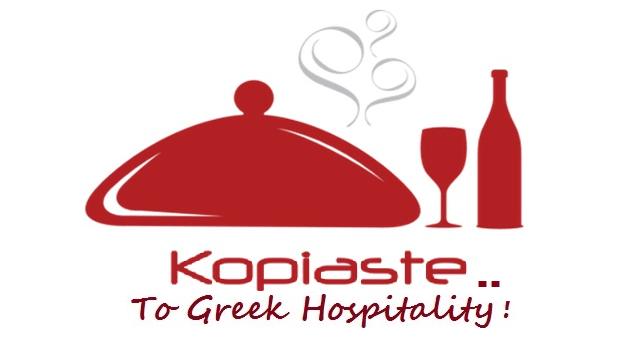
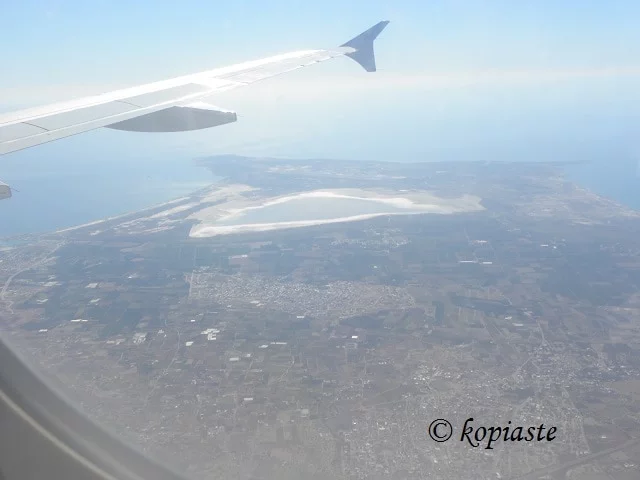
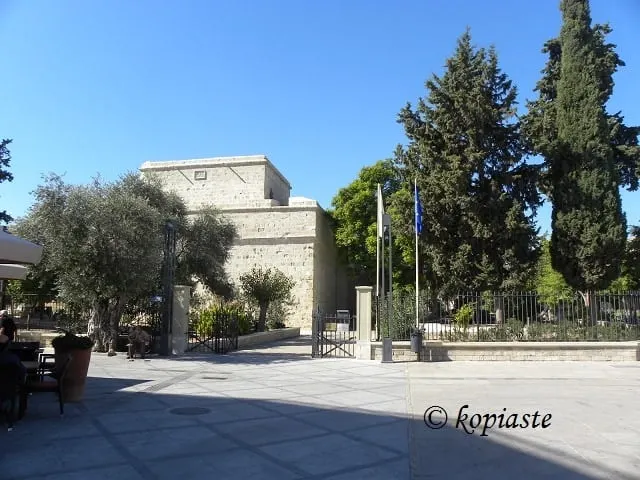
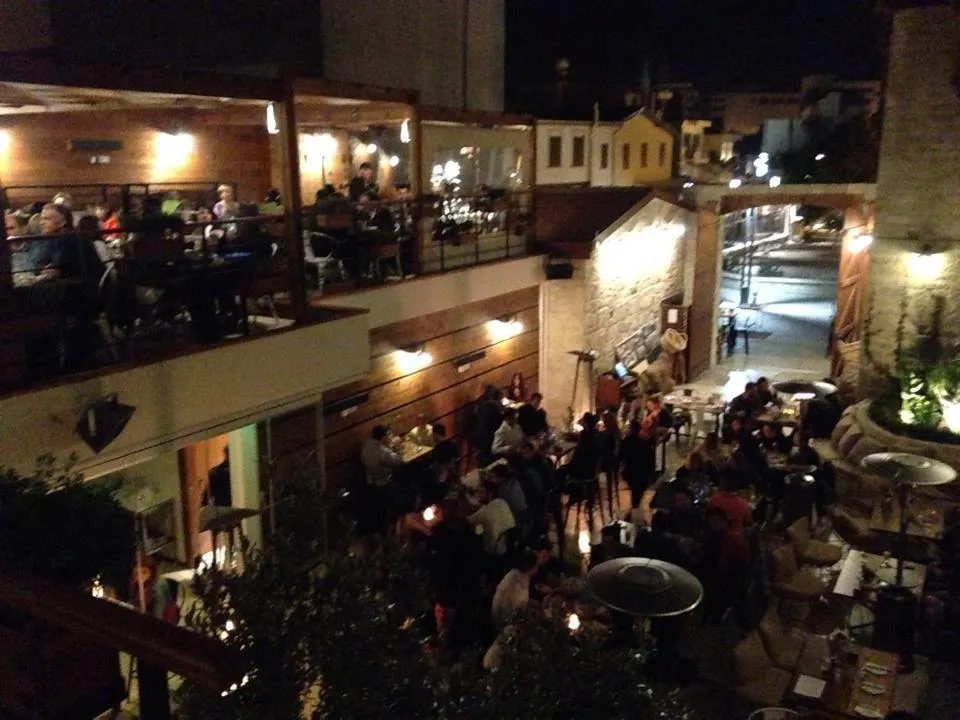
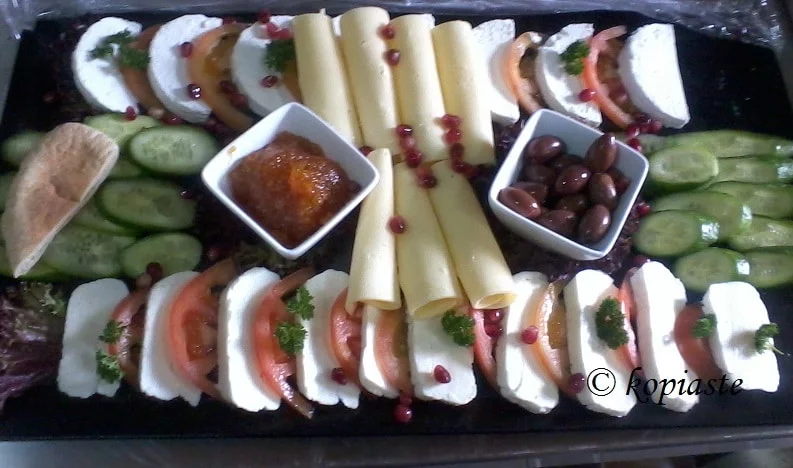
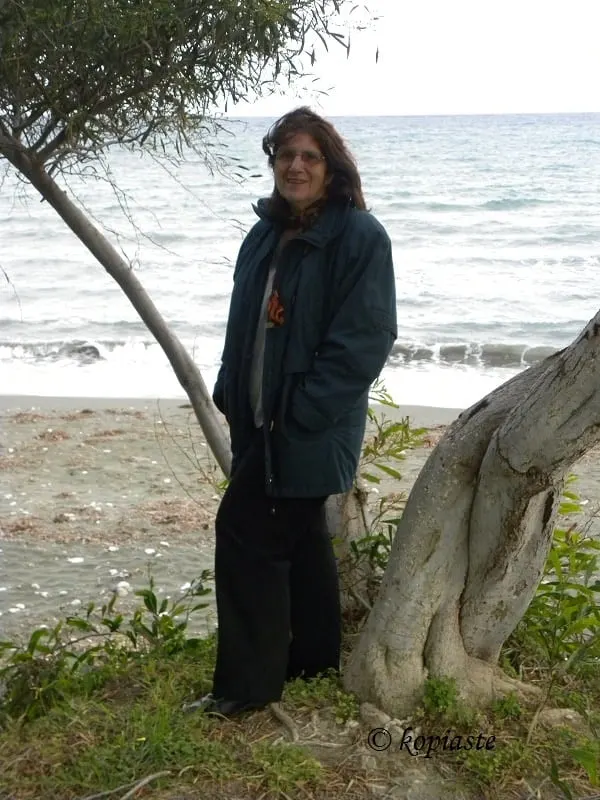
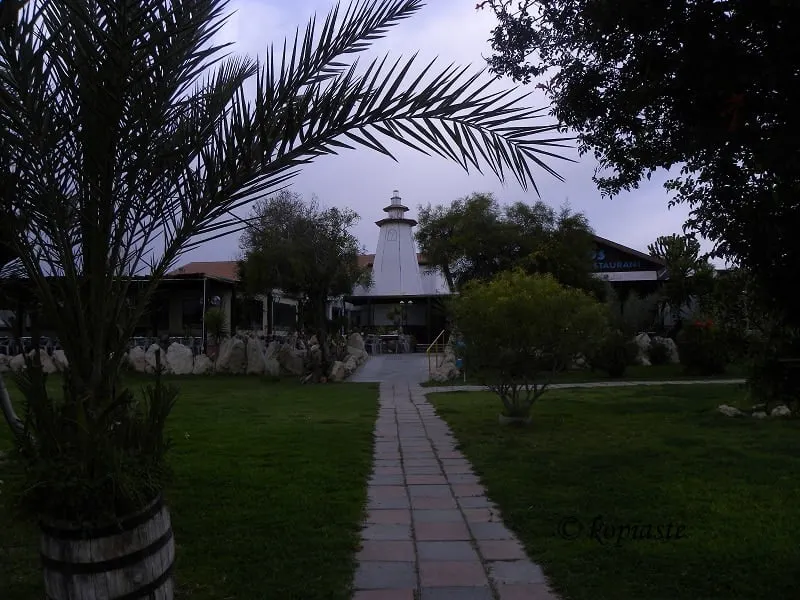
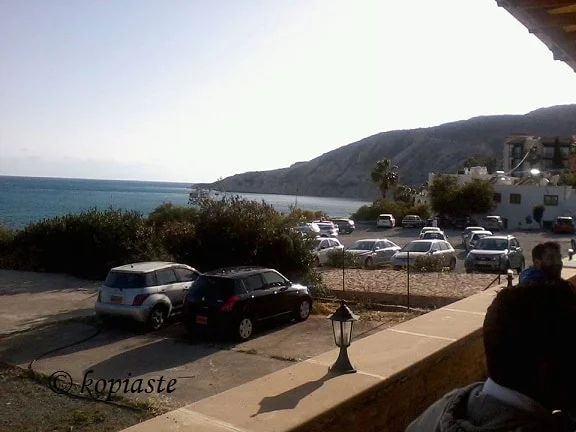

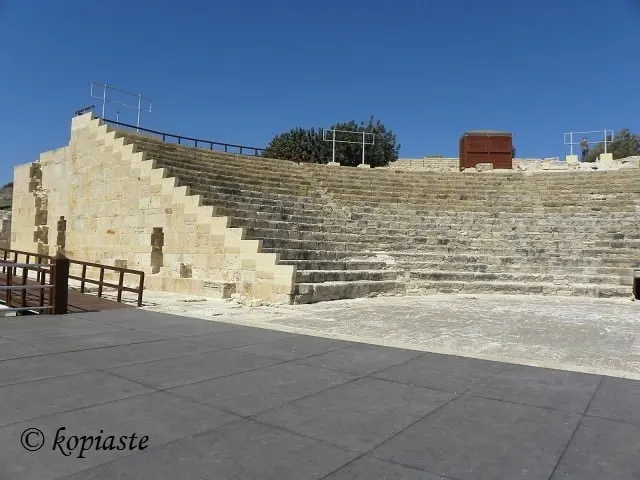
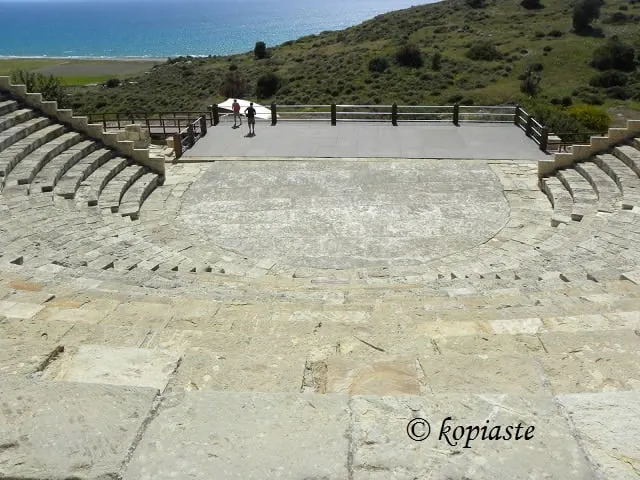
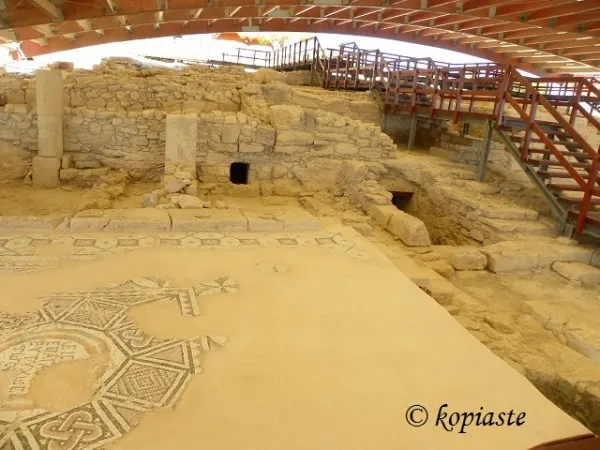
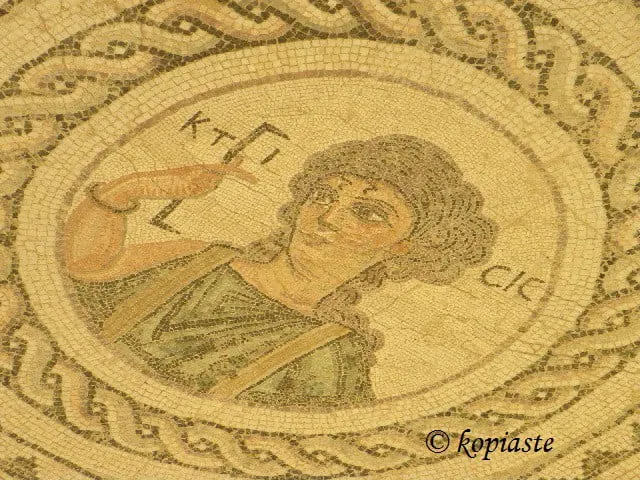
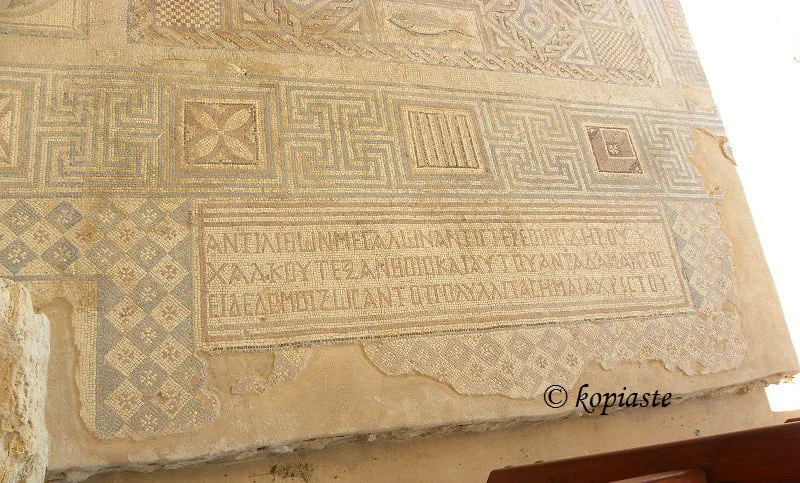
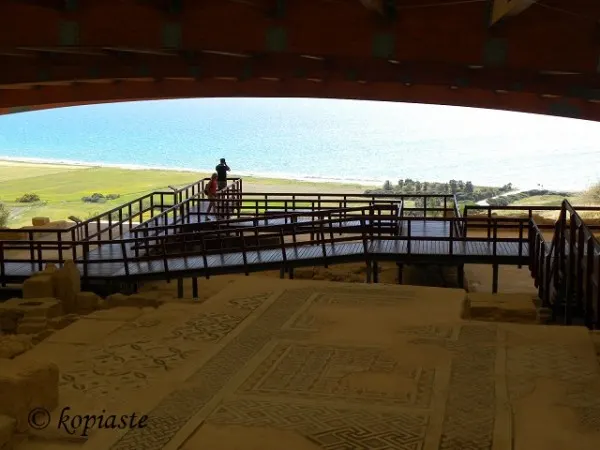
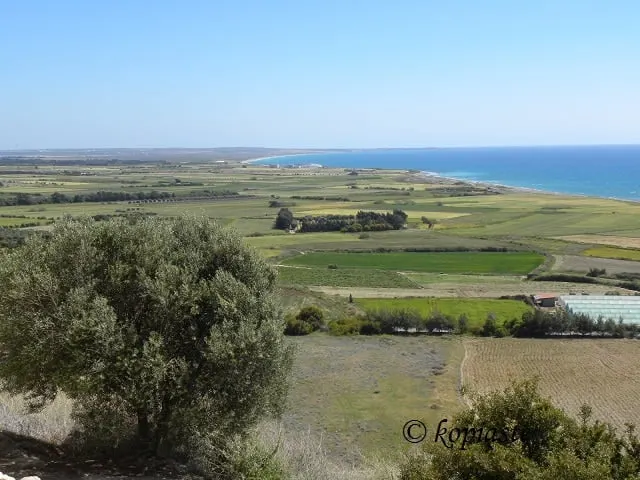
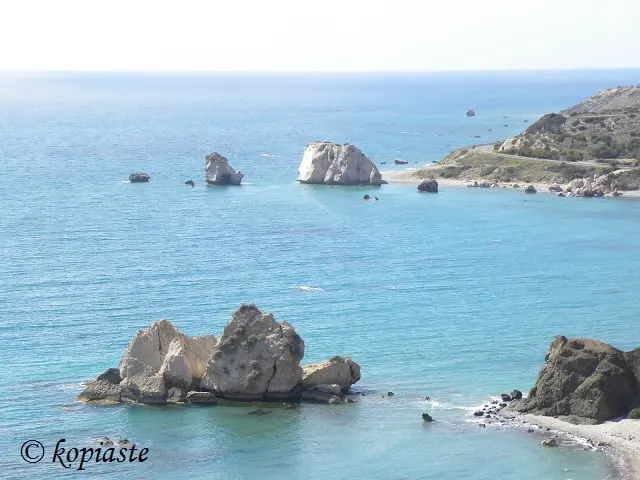
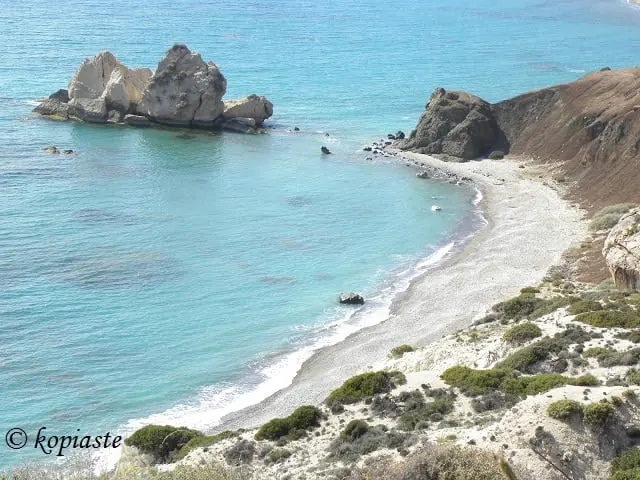
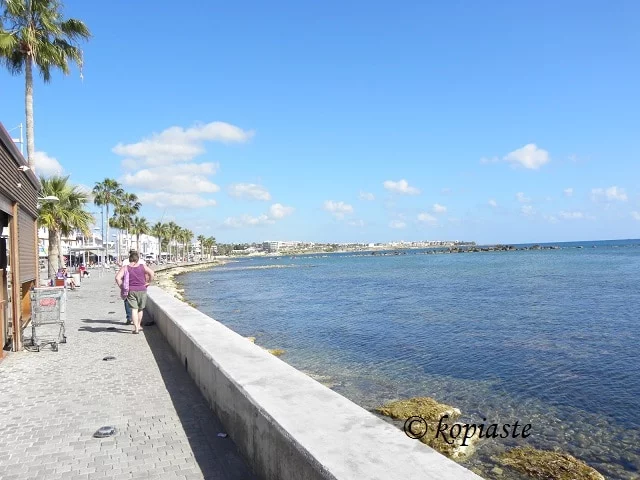
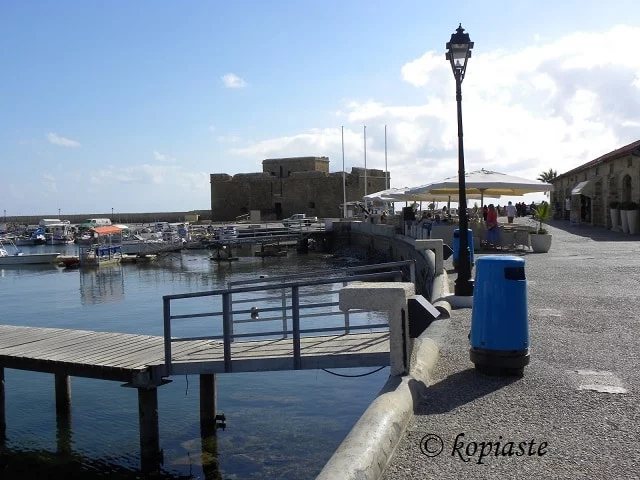
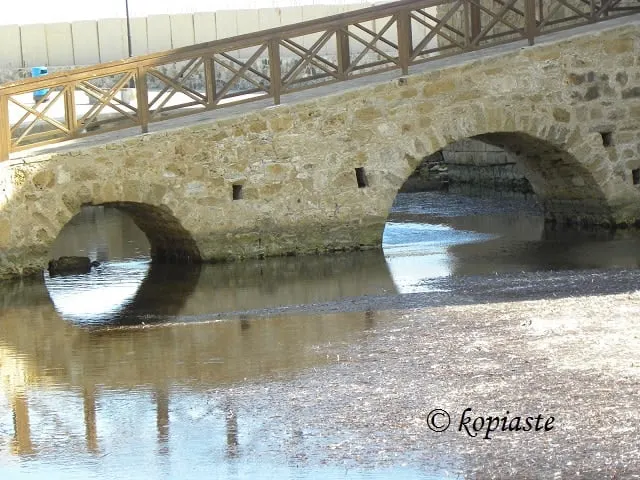
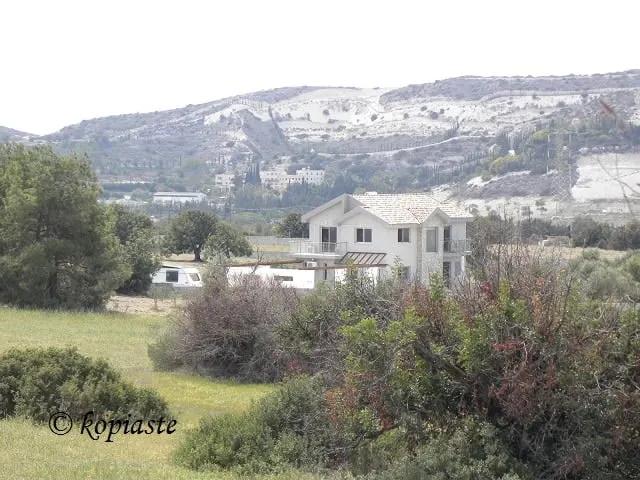
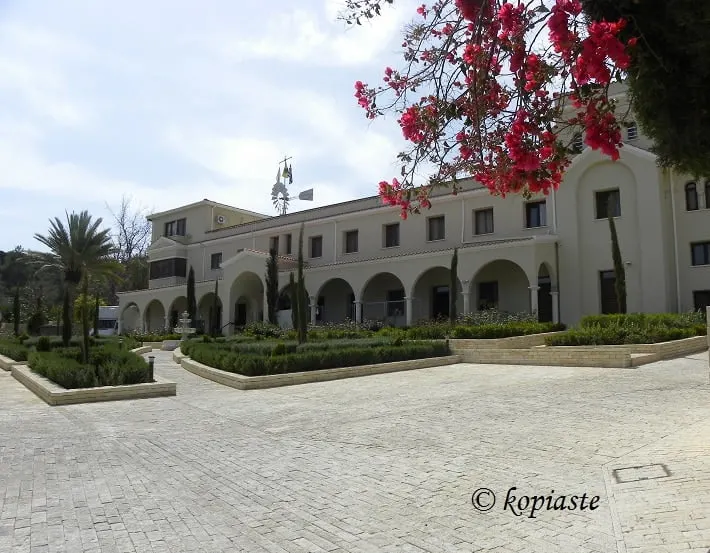
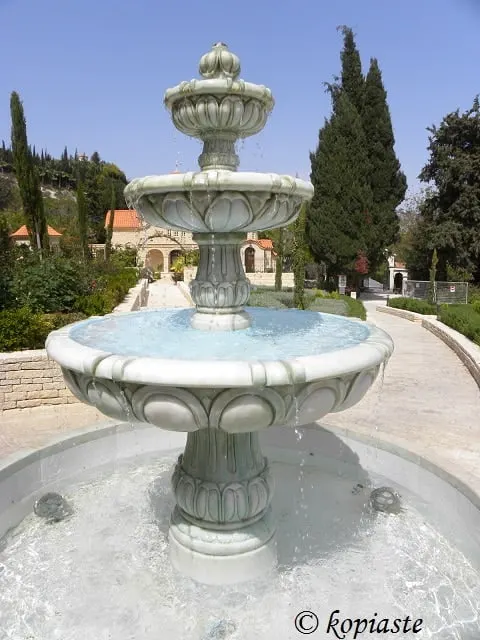
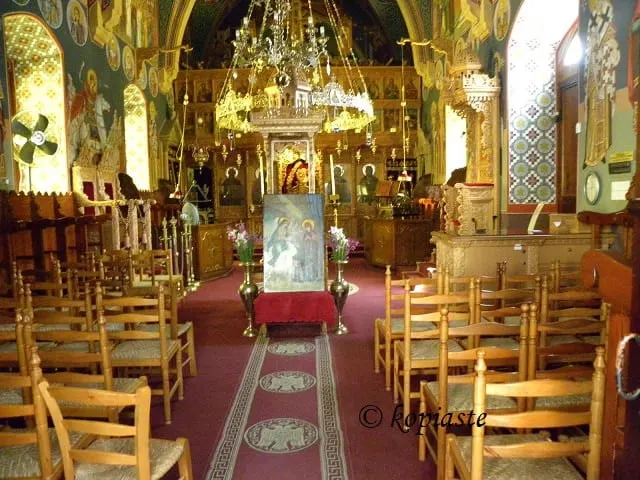
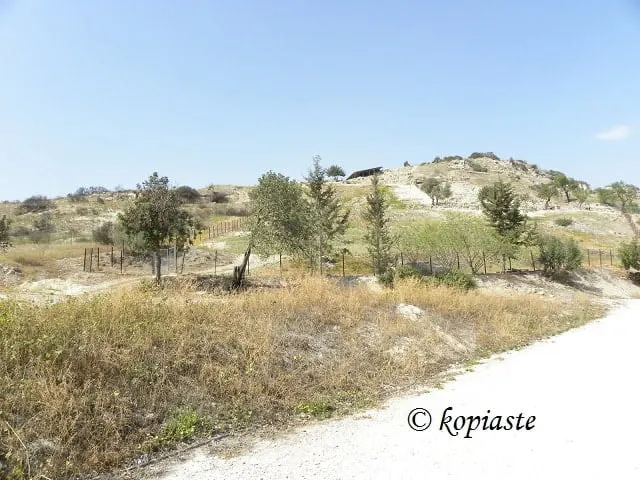
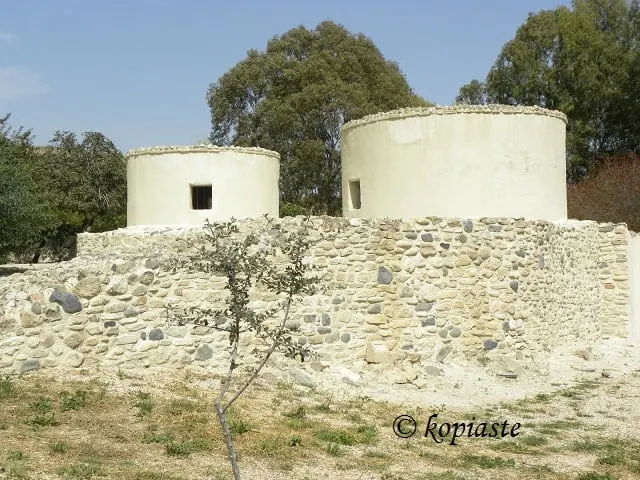
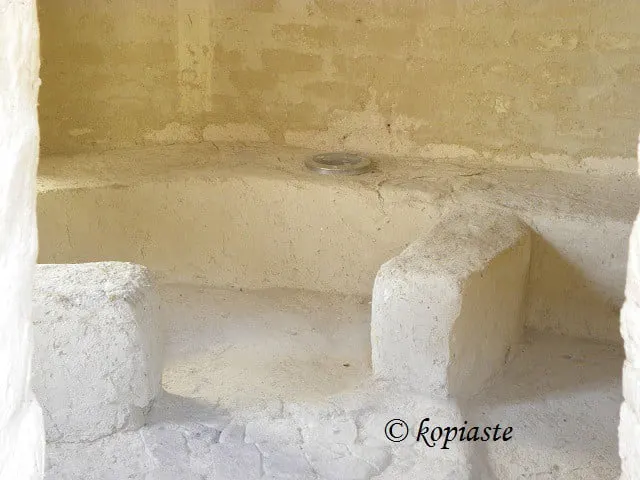
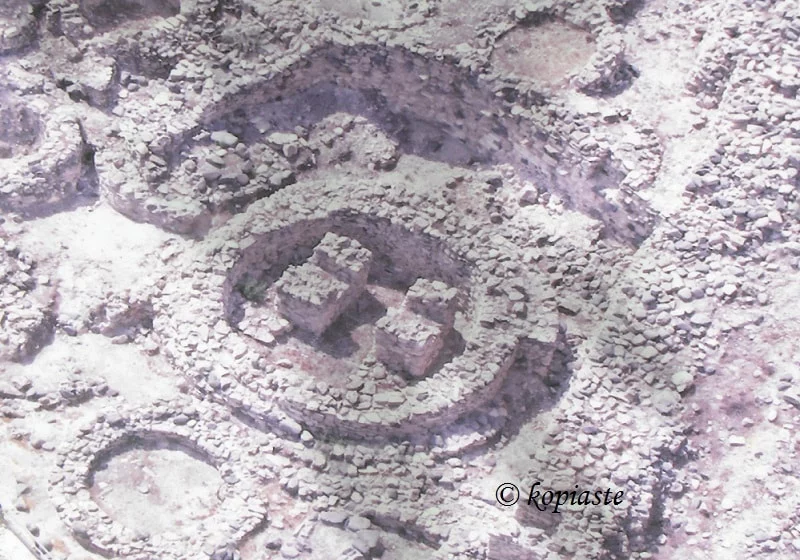
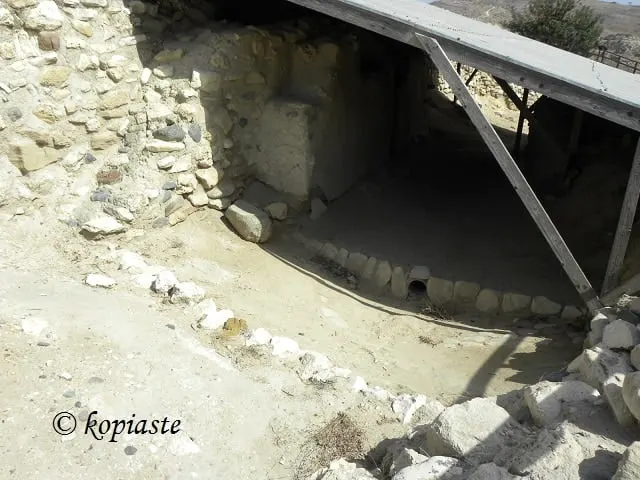
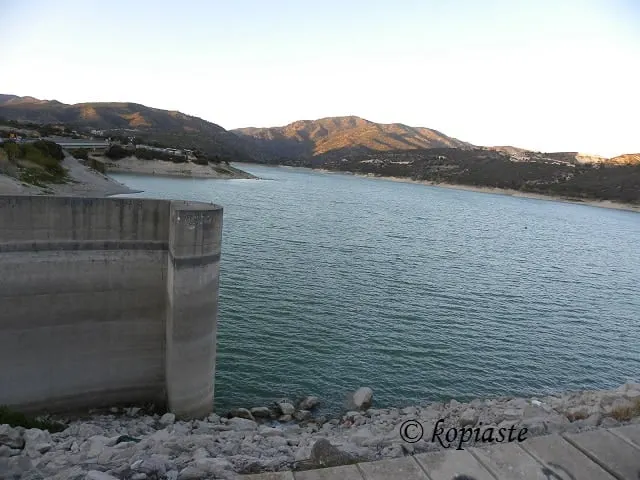
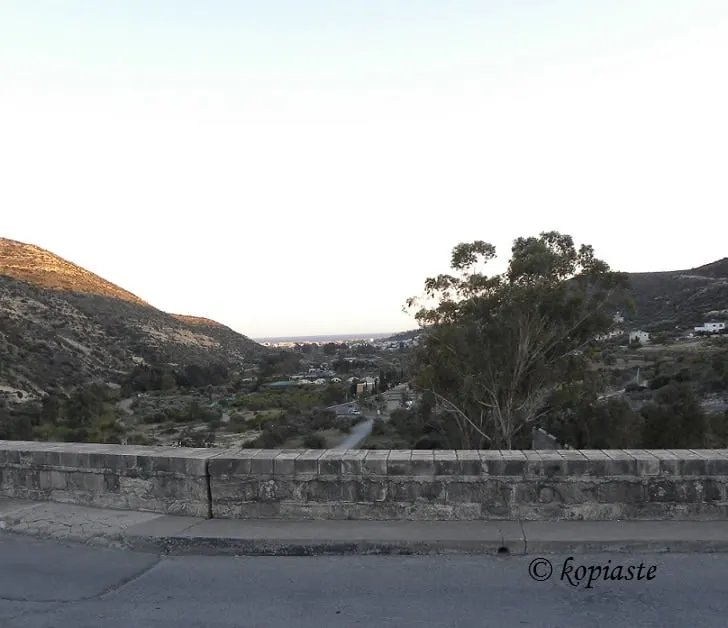
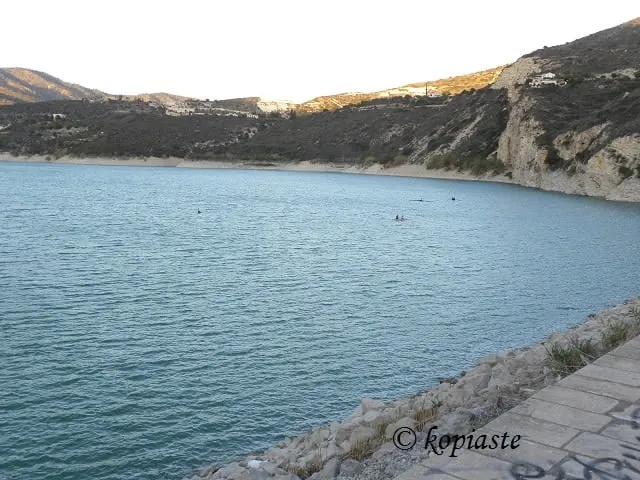
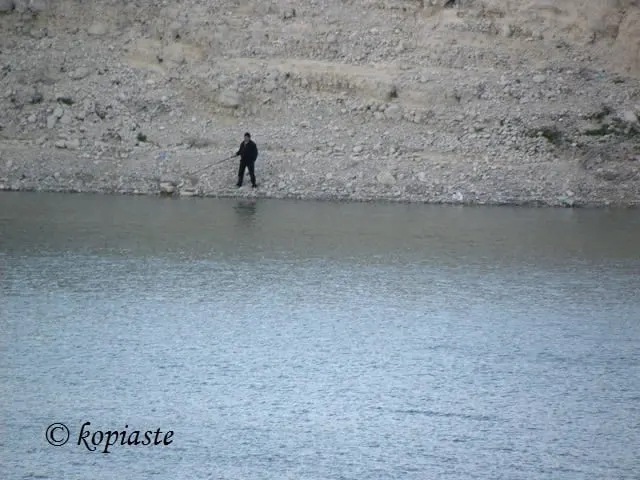
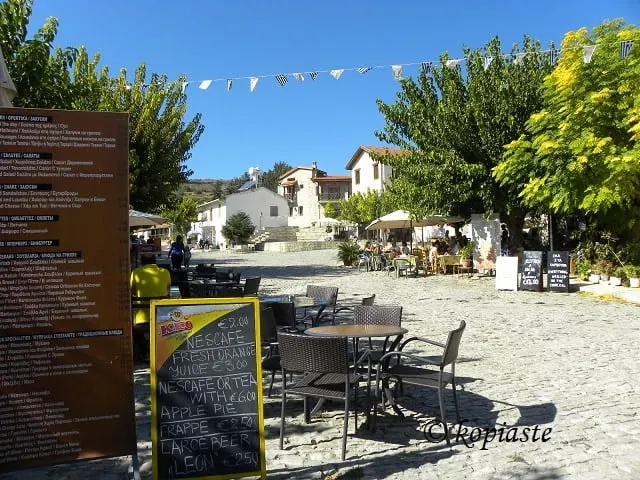
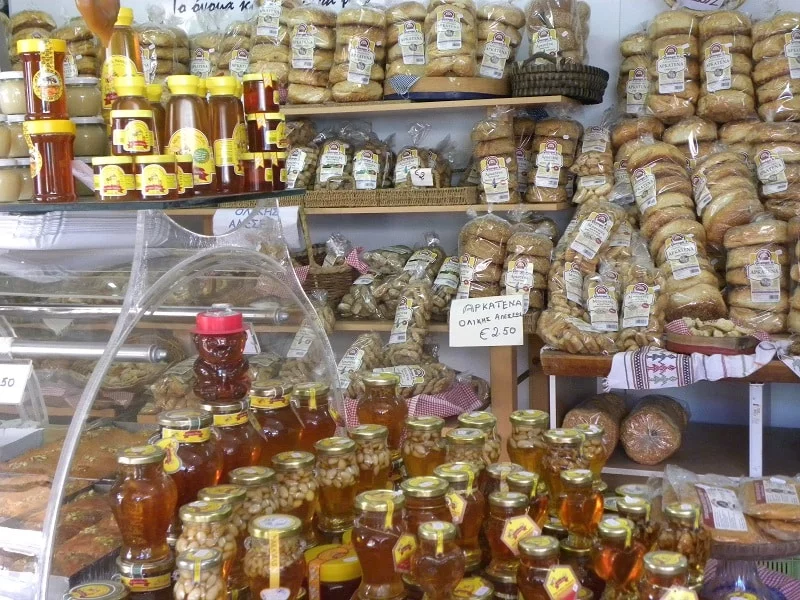
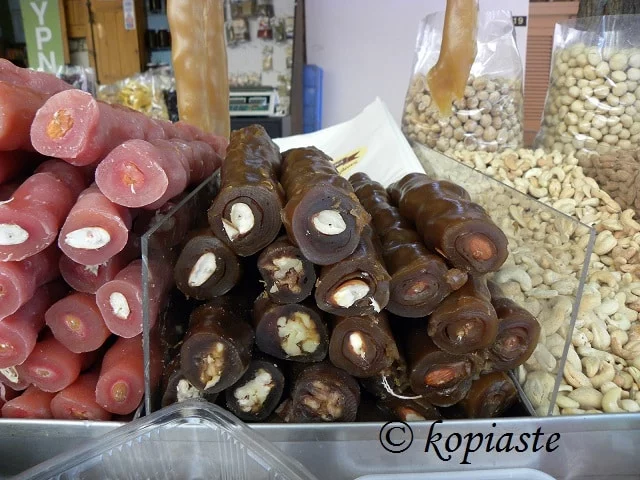
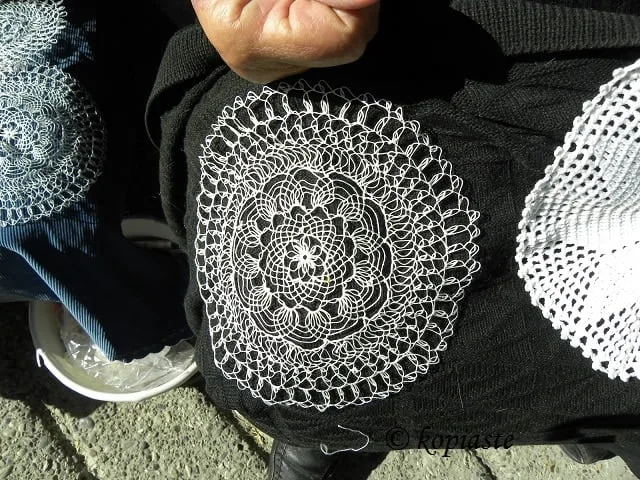
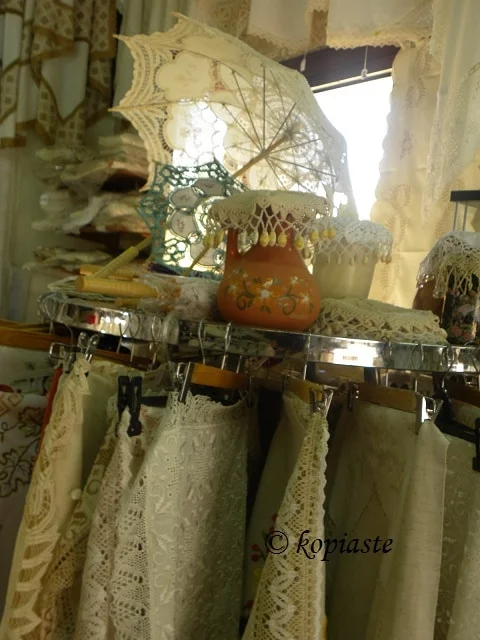
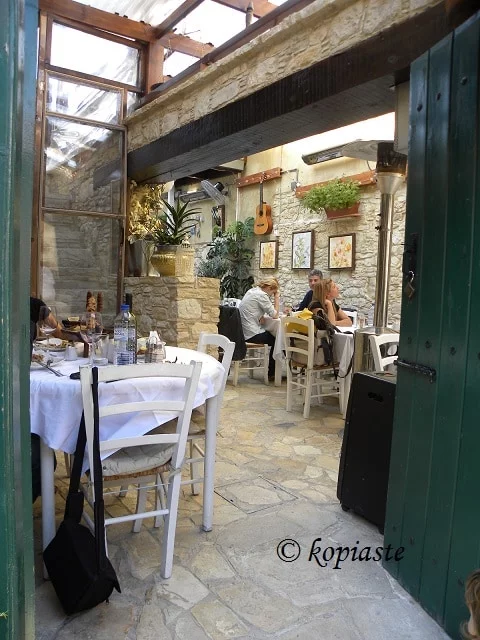
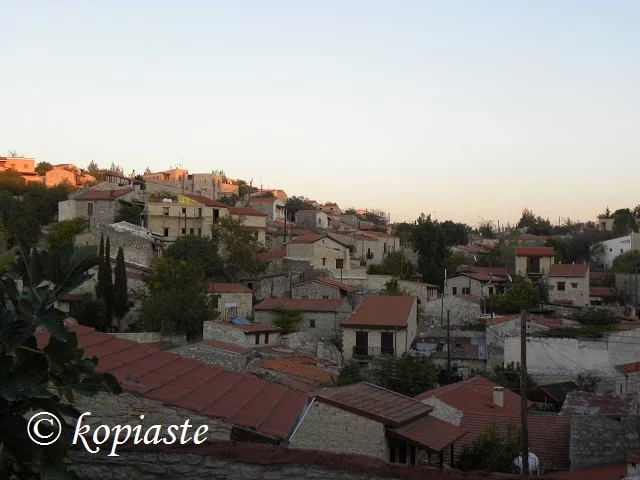
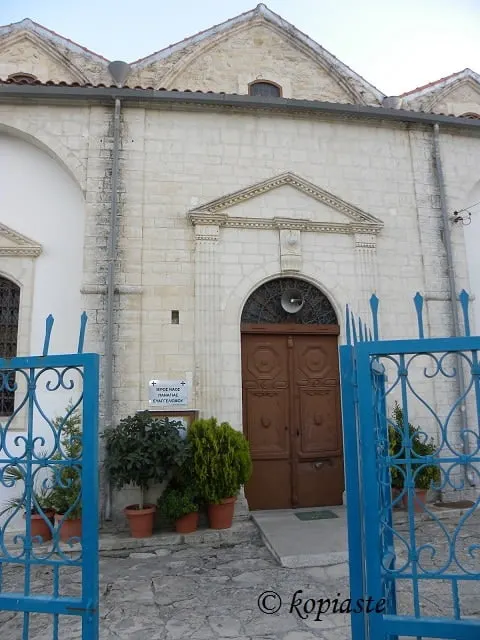
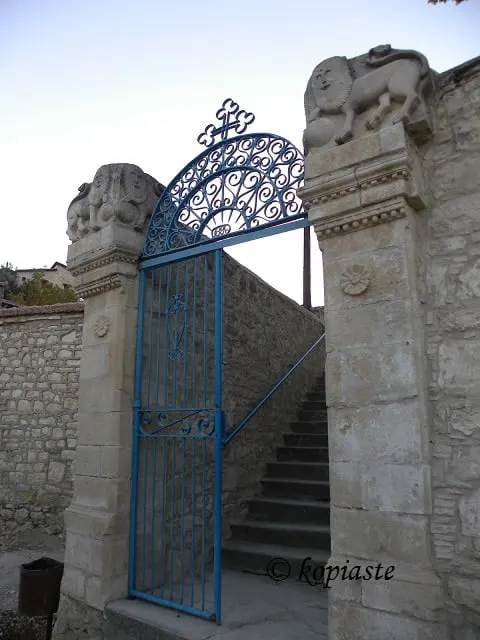
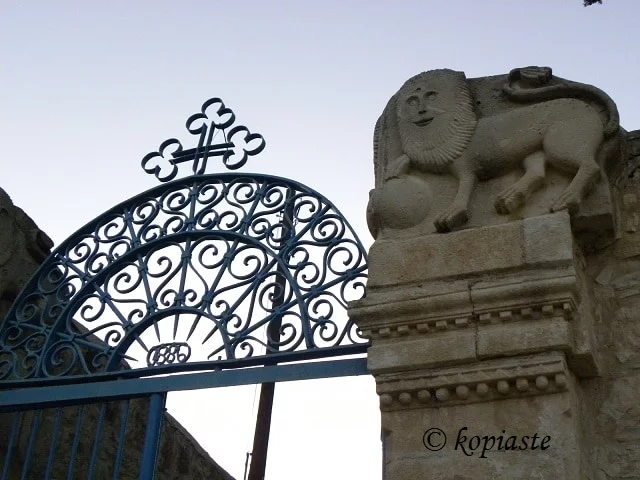
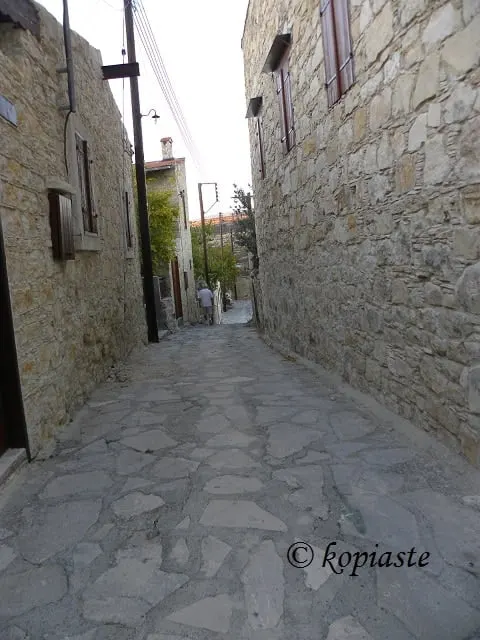
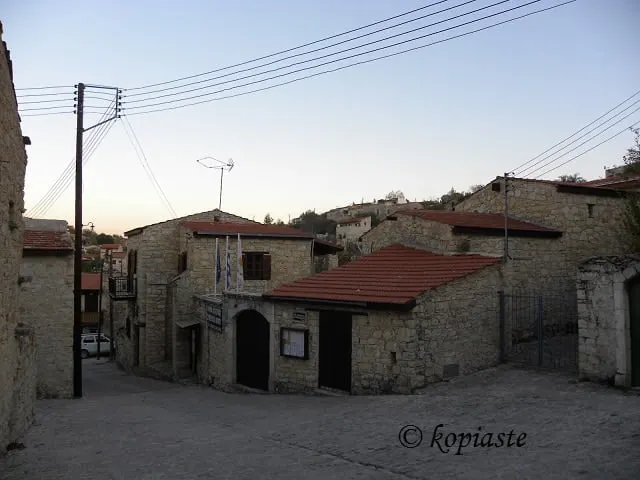
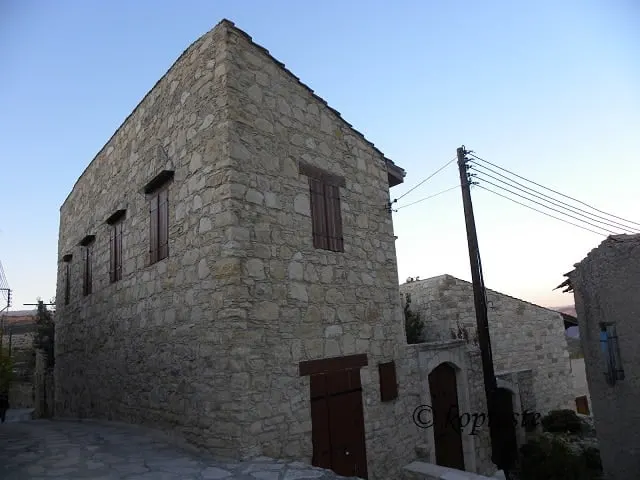
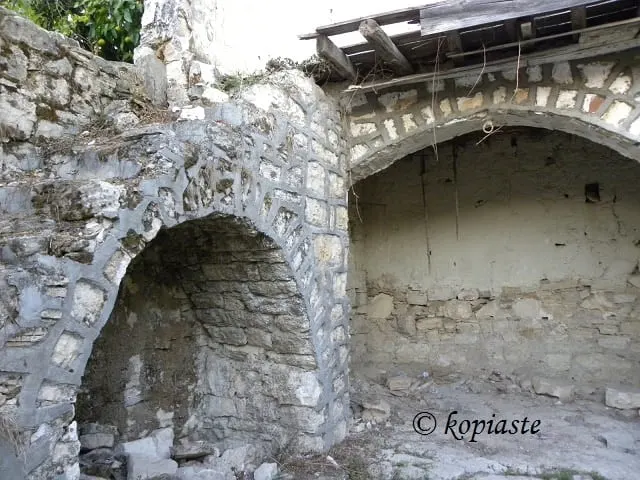
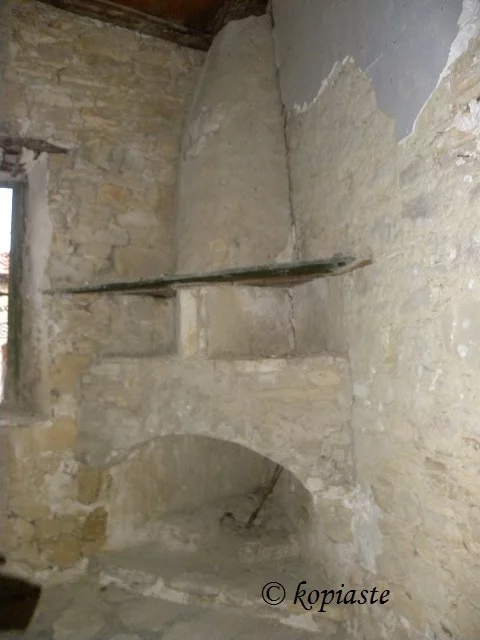
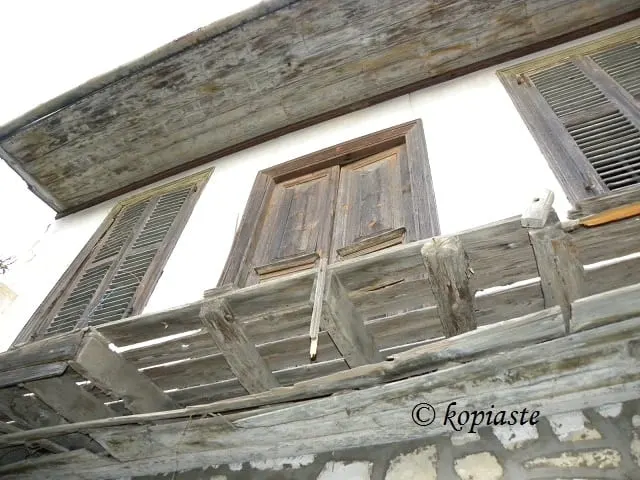
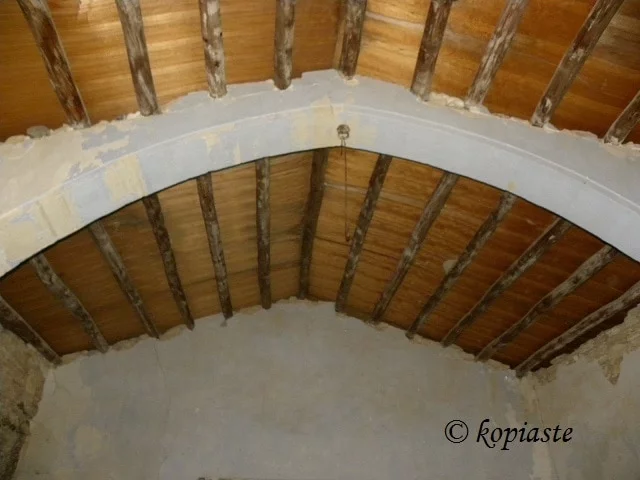
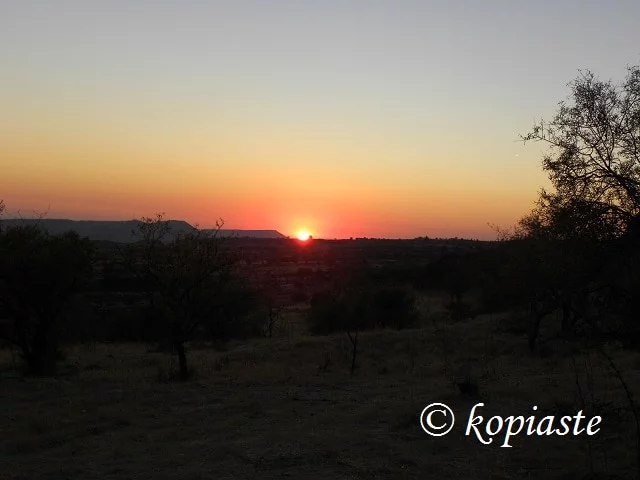

In Paphos
Thursday 25th of June 2015
I am really glad to see that you enjoy your stay in Cyprus. I am not sure when you last visited Cyprus but you have to visit Paphos in 2017. Paphos will be the European Capital of Culture and i believe you will not recognize it. By the way your pictures are amazing and they are capturing the essence. Truly wonderful images. Love them!
Ivy
Thursday 25th of June 2015
Thank you.
Pearl
Thursday 28th of May 2015
Thanks for sharing your journey with us these pictures look amazing.
Anna
Tuesday 15th of April 2014
Thanks for sharing lots of lovely pictures & memories. A few of the places I know well, others will be worth investigating on our next trip : )
I especially like the one of you at Governor's Beach - adds a nice personal touch : )
PG
Tuesday 15th of April 2014
what a lovely travelogue you have made! What lovely places! Enjoyed going through it. So good you took time to visit These places.